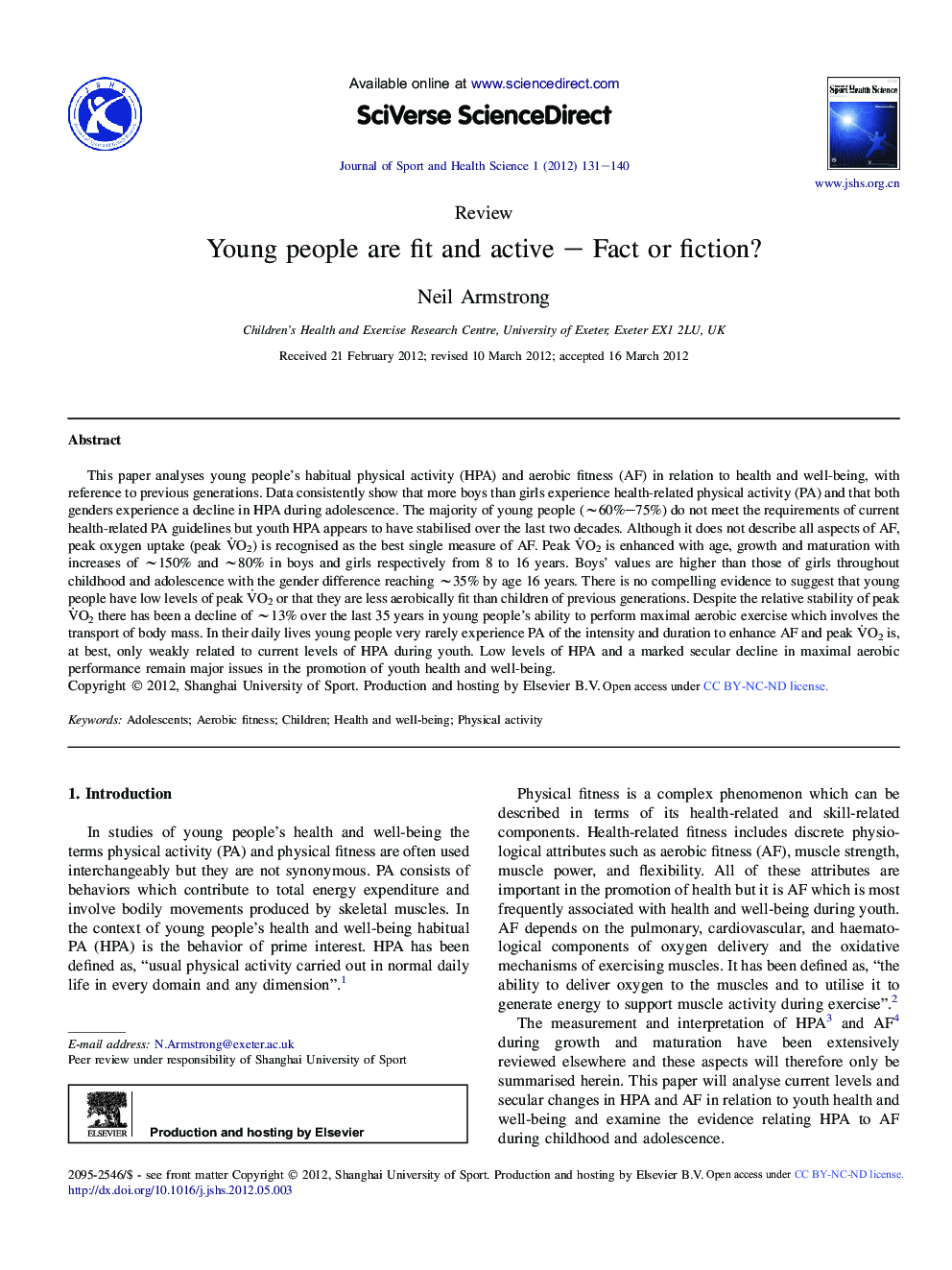| کد مقاله | کد نشریه | سال انتشار | مقاله انگلیسی | نسخه تمام متن |
|---|---|---|---|---|
| 1084211 | 951265 | 2012 | 10 صفحه PDF | دانلود رایگان |

This paper analyses young people's habitual physical activity (HPA) and aerobic fitness (AF) in relation to health and well-being, with reference to previous generations. Data consistently show that more boys than girls experience health-related physical activity (PA) and that both genders experience a decline in HPA during adolescence. The majority of young people (∼60%–75%) do not meet the requirements of current health-related PA guidelines but youth HPA appears to have stabilised over the last two decades. Although it does not describe all aspects of AF, peak oxygen uptake (peak V˙O2) is recognised as the best single measure of AF. Peak V˙O2 is enhanced with age, growth and maturation with increases of ∼150% and ∼80% in boys and girls respectively from 8 to 16 years. Boys' values are higher than those of girls throughout childhood and adolescence with the gender difference reaching ∼35% by age 16 years. There is no compelling evidence to suggest that young people have low levels of peak V˙O2 or that they are less aerobically fit than children of previous generations. Despite the relative stability of peak V˙O2 there has been a decline of ∼13% over the last 35 years in young people's ability to perform maximal aerobic exercise which involves the transport of body mass. In their daily lives young people very rarely experience PA of the intensity and duration to enhance AF and peak V˙O2 is, at best, only weakly related to current levels of HPA during youth. Low levels of HPA and a marked secular decline in maximal aerobic performance remain major issues in the promotion of youth health and well-being.
Journal: Journal of Sport and Health Science - Volume 1, Issue 3, December 2012, Pages 131–140